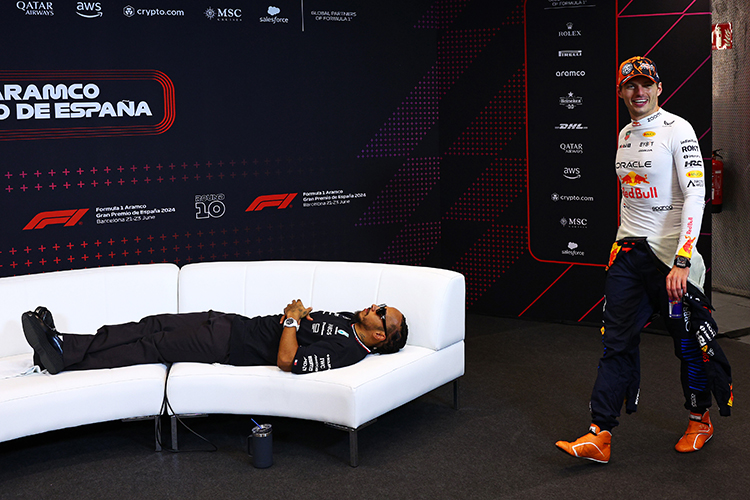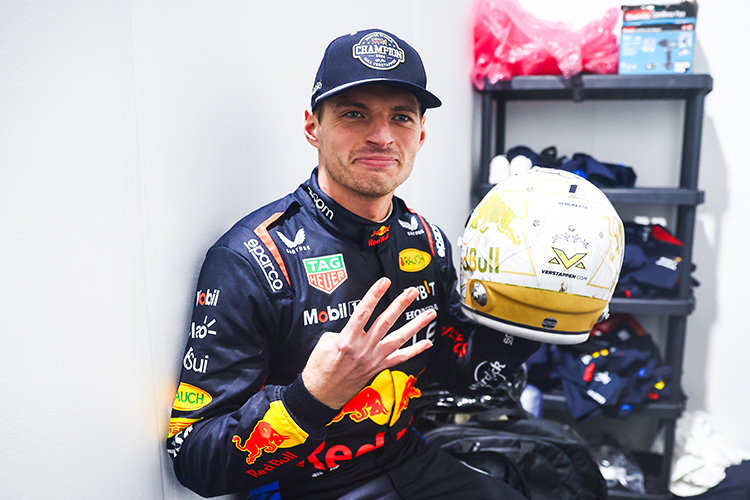How McLaren, Mercedes, and Ferrari are strategizing off-track to overtake Red Bull
 Red Bull Racing/Red Bull Content Pool
Red Bull Racing/Red Bull Content Pool
The path to victories in Formula One is a long and grueling one, demanding persistence, mental fortitude, and skill from the driver, and relentless innovation and teamwork from the team. The recent success story of Lando Norris, who secured his first F1 win on his 110th attempt last Sunday, is a testament to this grueling journey. Behind the scenes, McLaren, Mercedes, and Ferrari are each devising their strategies to close the gap with Red Bull.
Lando Norris found victory in Miami, a win bolstered by strategic upgrades and fortuitous safety car timing. McLaren's meticulous offtrack efforts have shone through in their performance.
"I have to say a big thanks to all of McLaren, everyone back in the factory, everyone that's here, because it would have been a lot less likely that I won today without these upgrades and without the hard work that they've been putting into everything," Norris said post-race.
Starting with a new front wing, the team re-optimized airflow across various components, enhancing the car's overall downforce. This tweak allowed McLaren to address known weaknesses such as slow-speed cornering and straight-line speed deficits.
"Yes, we improved the car," team principal Andrea Stella noted. "We take this positive; we take this encouragement, but if anything, it's even more energy to develop, possibly even faster than what we are doing."
Mercedes, although not as rapid in their developments as McLaren, introduced significant updates at Miami, including revised front suspension and a new floor. While not yielding immediate parity with the front-runners, these changes are part of a larger roadmap for sustained upgrades over the coming races.
"We managed to pull forward about half of our update kit to Miami and then the other half is going to arrive [at the next race] in Imola," explained Mercedes' head of trackside engineering Andrew Shovlin.
However, Mercedes is still grappling with consistency issues, which, if rectified, could unlock more potential from their updates.
"What we tend to find is that the car from session to session can behave quite differently and until we get on top of that, we are always going to blunt the benefit that we can get from these type of updates," Shovlin added.
Ferrari, on the other hand, has shown a more stable platform. With major upgrades anticipated at Imola, team principal Fred Vasseur remains cautiously optimistic.
"When we are bringing something, it is never a mega upgrade," Vasseur admitted. "But it's also true that in qualifying, if you have four or five teams covered by one-tenth of a second, it is a game-changer for the weekend."
This approach, combined with meticulous race-day decisions, aims to convert small gains into substantial results.
"A large part of the result is also coming from what we are doing with the drivers, the setup of the car and the management of the tyres, so we don't think only about developments and upgrades, it is also the job we are doing at the track," noted Vasseur.
Aware that a single upgrade won't bridge the gap entirely, all three teams are aiming for marginal gains. As Fred Vasseur aptly put it:
"Red Bull is still ahead and for me Max could have won in Miami without the safety car... But because it is so tight it can bring welcome performance."
Ultimately, the game is about consistently delivering these marginal gains, inching closer to Red Bull's pace, and being ready to capitalize on every opportunity. The hope, collectively across these teams, is to create a scenario where races like Miami become more frequent victories rather than rare exceptions.
Feel free to adjust the placement of direct quotes or to tailor the emphasis according to your editorial standards.
Up Next



